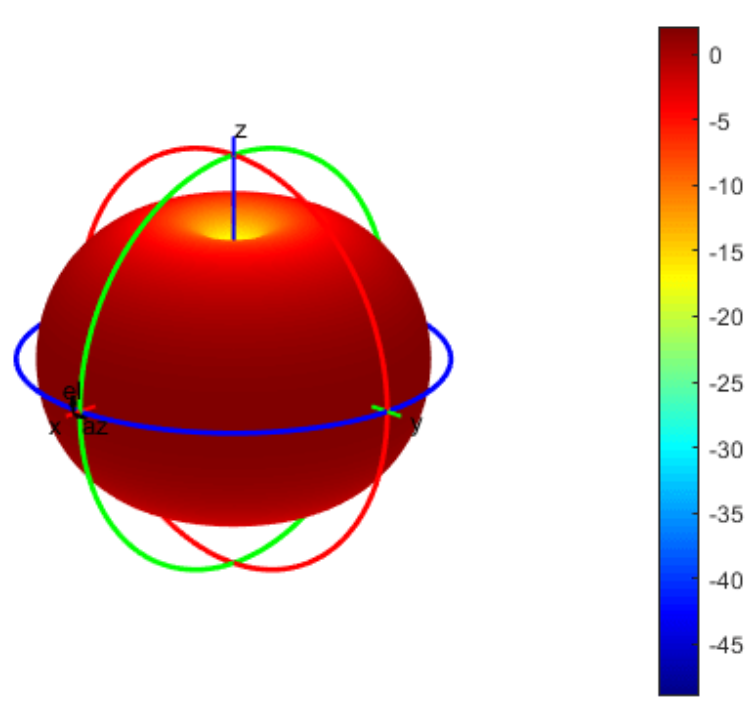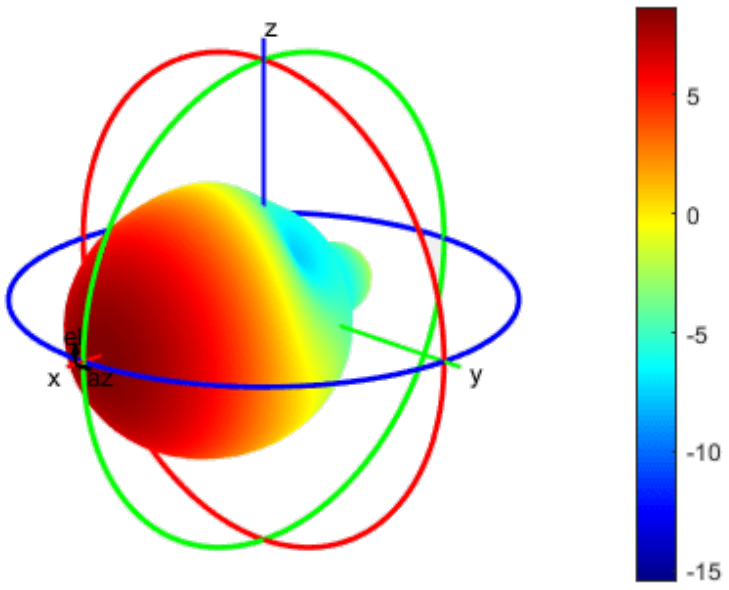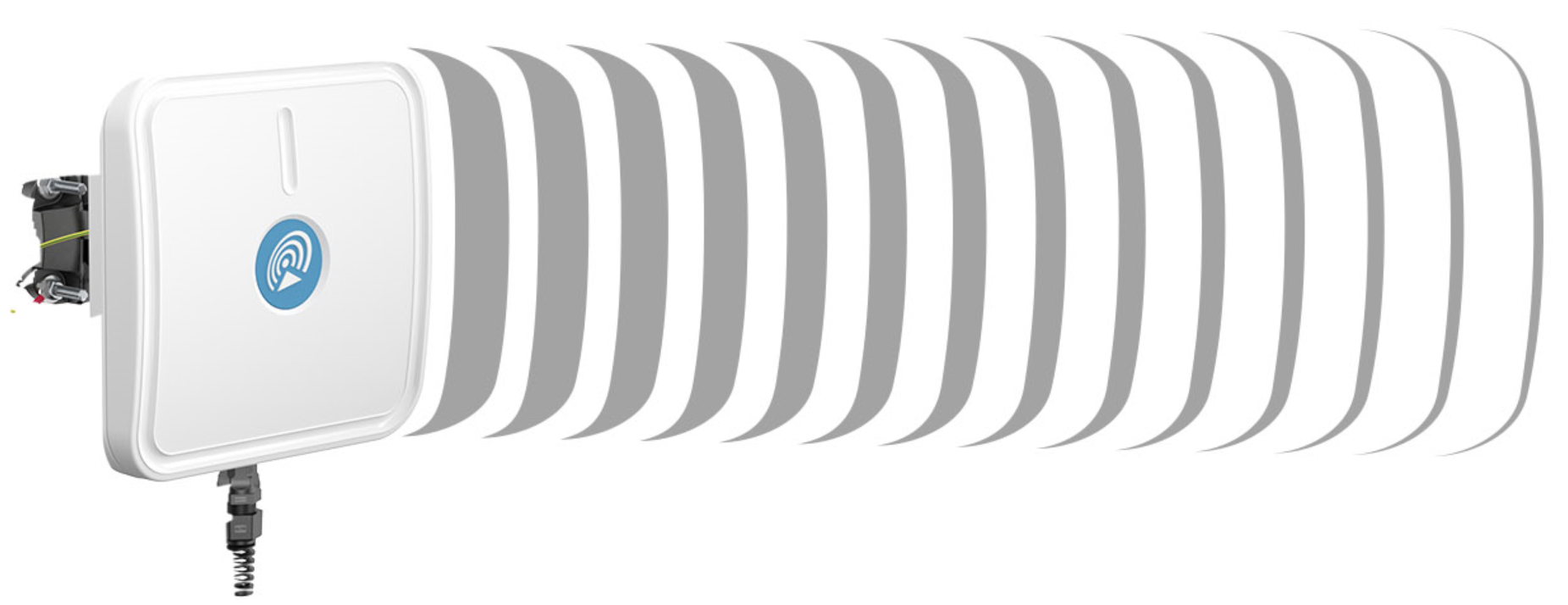What are the differences between omni-directional and uni-directional antennas?
16.07.2023
Omni or directional antenna – what are the differences? Which one to use in particular cases? To decide which one suits you more, you need to take a glimpse on some basics.
Omni-directional antenna (omni antenna)
Type of antenna which receives or transmits signals in all directions along one plane with equal strength. Thank to that you can receive signals from whenever you are in a particular area. Omni antennas are compatible with a variety of cellular base stations. Mobile or LTE routers are able to roam around various cells, but it has its price. The more stations involved, the less concentrated the connection. It is easy to install and position changing is not required when there is a change in the network (e.g. station has been closed or damaged).
Figure 1. Omnidirectional antenna radiation pattern
Figure 2. Artistic vision of QuSpot omnidirectional antenna radiation
Uni-directional antenna (Directional antenna)
Type of antenna which maximizes its gain in a particular direction. Like a flashlight concentrates its light at one spot, directional antenna emits radio waves in a concentrated beam. Beamwidth depends on antenna’s gain (the lower gain, the wider beam). Due to directivity the signal received is improved what can be beneficial at long distances. A directional antenna minimizes interference from other sources what results in higher throughput. On the other hand it is limited to receiving signals from particular base station. As a consequence of being dependent to one base station, it may be needed to readjust the antenna in case of network changes (e.g. station has been closed or damaged).
Figure 3. Directional antenna radiation pattern
Figure 4. Artistic vision of QuMax directional antenna radiation
Differences between omni and directional antenna
To summarise the differences between these two antennas we came up with a small table that compares the differences.
Omni antennas | Directional antennas |
Receiving or transmiting signals in all directions along one plane with equal strength | Receiving or transmiting signals in particular direction |
Does not require position adjusting when the network changes | Requires position adjusting when the network changes |
Can encoutner interference problems due to receiving signals from all directions | Reduces interference problems by maximizing its gain in particular direction |
Generally better in urban areas | Generally better in rural areas |
Used to transmit signal to receivers whose locations are not fixed | Used to transmit signal to receivers whose locations are fixed |
Generally lower gain | Generally higher gain. That allows to detect more distant or weaker signals |
Conclusion: The differences
The best use of Omni antennas is in places that require good all-round coverage. They are easy to install and does not need a place change in case of cellular base station relocation or malfunction. They service multiple users and provide constant coverage over particular area. That is why they are better in urban areas.
Directional antennas are most useful in situations requiring the signal to be focused in a particular direction. Focusing on one target can amplify signal, but only from one provider. According to that you have to point the antenna directly to the nearest station to use its full potential. That is why they have more use in rural areas which are distant from cellular base stations.
Choosing the right antenna may sometimes be challanging and very dependant on situation. At first you should do a ground investigation to decide which one is better. Eventhough, we have created a list of examples, which may help to become more certain about your choice. They are as follows:
Omni antennas:
- cars / campervans
- agricultural devices
- yachts / boats
- solar power farms
- construction machines
- CCTV cameras
- autonomous delivery robots
- storage management
- live event streaming
- seaports
- police / medical units
- public transport
- remote control of equipemet in enterprise
- company branches
- HVAC systems
Directional antennas:
- at buildings located far away from cellular base station
- receiving signal from satelite
- APs mounted on the walls inside warehouses
- cellular base stations (sector antennas)
- for radio controlled drones
- wind turbines (sector antennas)
- remote water pumps
- parking lots (sector antennas)
- radar devices
- underground mining/tunnel systems (helical antennas)
Summary
Have you ever encountered a problem which antenna to choose - omni-directional or uni-directional? Which one is more efficient? What are the differences? Here you can find anwsers to those questions and more. We covered topics of how do those antennas work, how to choose more suitible one and gathered all the differences in one place for your convinience! It can not only help you understand the basic of their work, but what’s more important, to help you choose the one you need.






